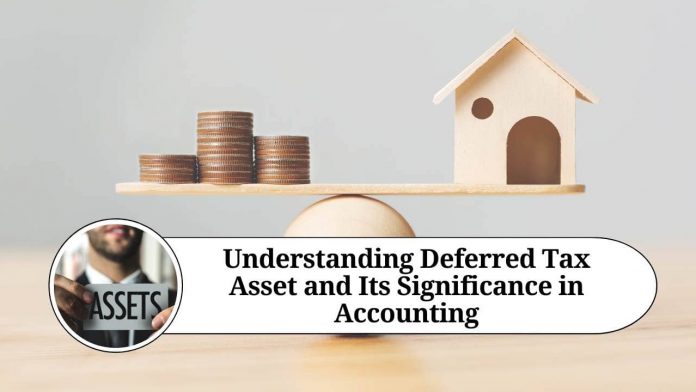In the world of finance, accounting plays a significant role. It helps companies in keeping track of their financial transactions, income, and expenses. One important aspect of accounting is deferred tax assets, which are often used by companies to reduce their tax liabilities. In this blog, we will explore what a deferred tax asset is, its significance, and how it can affect a company’s financial statements.
What is a Deferred Tax Asset?
A deferred tax asset is a type of accounting entry that arises when a company has overpaid its taxes in the past or has paid taxes in advance. This overpayment or advance payment creates a future tax benefit, which can be used to reduce the company’s tax liabilities in the future.
Significance of Deferred Tax Asset:
Deferred tax assets can have a significant impact on a company’s financial statements. They can reduce the amount of tax expenses, which can increase the company’s net income. This, in turn, can increase the company’s earnings per share, which is a key metric that investors often look at when making investment decisions.
How is Deferred Tax Asset Calculated?
The calculation of deferred tax assets can be a bit complex. It involves estimating the future tax benefits that a company will receive, which can be difficult to predict. In general, deferred tax assets are calculated based on the company’s current and future tax rates, as well as the timing of its tax payments and deductions.
Accounting Treatment of Deferred Tax Asset: Deferred tax assets are recorded on a company’s balance sheet as an asset. They are listed under the current or non-current assets section, depending on when the tax benefit will be realized. Additionally, they are subject to impairment testing, which means that if the company’s future tax benefit is uncertain, the value of the deferred tax asset may need to be written down.
Conclusion:
In conclusion, a deferred tax asset is an accounting entry that can have a significant impact on a company’s financial statements. It represents a future tax benefit that can be used to reduce the company’s tax liabilities, which can increase its net income and earnings per share. While the calculation of deferred tax assets can be complex, it is an important concept for accountants and investors to understand.
Frequently Asked Questions (FAQs)
Q:1 What is a Deferred Tax Asset (DTA)?
A: A Deferred Tax Asset (DTA) is an accounting entry that represents a future tax benefit that a company can use to reduce its future tax liabilities. It arises when a company has overpaid its taxes in the past or has paid taxes in advance.
Q:2 How is a Deferred Tax Asset calculated?
A: The calculation of a Deferred Tax Asset can be complex and involves estimating the future tax benefits that a company will receive. The calculation is based on the company’s current and future tax rates, as well as the timing of its tax payments and deductions.
Q:3 What is the significance of a Deferred Tax Asset?
A: A Deferred Tax Asset can have a significant impact on a company’s financial statements. It can reduce the amount of tax expenses, which can increase the company’s net income. This, in turn, can increase the company’s earnings per share, which is a key metric that investors often look at when making investment decisions.
Q:4 How is a Deferred Tax Asset treated in accounting?
A: A Deferred Tax Asset is recorded on a company’s balance sheet as an asset. It is listed under the current or non-current assets section, depending on when the tax benefit will be realized. Additionally, it is subject to impairment testing, which means that if the company’s future tax benefit is uncertain, the value of the Deferred Tax Asset may need to be written down.
Q:5 Can a Deferred Tax Asset be carried forward indefinitely?
A: In some cases, a Deferred Tax Asset can be carried forward indefinitely. However, this depends on the tax laws in the country where the company operates. In some cases, there may be limitations on how long a Deferred Tax Asset can be carried forward.
Q:6 Can a Deferred Tax Asset be used to offset tax penalties?
A: No, a Deferred Tax Asset cannot be used to offset tax penalties. It can only be used to offset future tax liabilities.




















